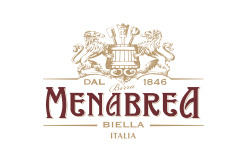Literary Metaphysics: Massimo Bontempelli and the Foundations of Magical Realism
March 26, 2019
Is there a literary counterpart to what art historians call the ‘Scuola Metafisica’? Giorgio de Chirico himself wrote disquieting poems, dreamlike prose, and even an experimental novel, while his brother Alberto Savinio became one of Italy’s most celebrated modernist authors and was included in André Breton’s foundational anthology of black humor. Another painter, Filippo de Pisis, claimed to have invented ‘Metaphysical narrative’ in Ferrara, and the early work of vanguardists, such as Palazzeschi, Delfini, and Govoni, has often been associated with Metaphysical art. All these experiences contributed to what critics, in textbooks and literary histories, have often called ‘Italian Surrealism.’ While challenging such a Franco-centric and imprecise formula, this lecture focuses on the most original and influential poetics that emerged from the impact of Metaphysical painting on Italy’s literary imagination: the style known as Realismo Magico, or Magismo.
Magic(al) Realism is an extremely broad category in current critical terminology, but few know that one of its earliest uses (arguably the first in the realm of literature) was proposed by writer Massimo Bontempelli to re-found Italian literature in the inter-war period. Bontempelli was deeply influenced by his meeting and collaboration with the de Chirico brothers, and forged a poetics of ‘everyday marvel’ that, after unsuccessful attempts at Neoclassical and post-Futurist literature, made him one of the most popular writers in Europe. Because of his relations with the fascist regime, Bontempelli’s magical writings and aesthetic theories have been largely forgotten in the second half of the twentieth century, but they still deeply influenced crucial voices of post-war literature, including that of Italo Calvino. This lecture will center on the two Favole metafisiche of the 1920s that are most clearly connected with the Metaphysical Masterpieces currently exhibited at CIMA. It will also argue that the Scuola Metafisica and Realismo Magico share some crucial literary and visual sources, including Ovid’s mythology, 15th century Italian painting, and Ludovico Ariosto’s irony.
Join us for an evening with Alessandro Giammei (Bryn Mawr College) and CIMA’s Spring Fellow Carlotta Castellani, who will discuss the magazine “Industrie Italiane Industriali” (“Italian Factories Illustrated”) as a Modernist Platform where both writers – such as Massimo Bontempelli – and artists – such as Mario Sironi and Carlo Carrà – worked and shared their new aesthetic ideas.
RESERVE A SEAT!
Program schedule:
6pm – registration, aperitivo, and viewing of Metaphysical Masterpieces
6:15pm – program begins, followed by audience Q&A
8pm – Evening concludes
Alessandro Giammei is an Assistant Professor of Italian Studies at Bryn Mawr College, where he is also affiliated with Africana Studies. He completed his Laurea degree at the University of Rome La Sapienza and got his PhD from the Scuola Normale Superiore. He taught at NYU as a visiting scholar and as a Cotsen Fellow in the Society of Fellows at Princeton University, where he additionally held leadership roles in the Program in Italian Studies and the Prison Teaching Initiative. His published articles and essays address trans-historical topics at the crossway of textual and visual studies, Italy’s modernism and the Renaissance. He is completing a book on Ludovico Ariosto’s legacy in the visual and literary culture of the machine age, from de Chirico’s painting to fascist folklore in Ferrara. His first book, Nell’officina del nonsense di Toti Scialoja (il verri, 2014), won the Harvard edition of the Edinburgh Gadda Prize in 2015. He recently published a collection of personal essays titled Una serie ininterrotta di gesti riusciti (Marsilio, 2018). www.giammei.com
Refreshments have been generously donated by:


